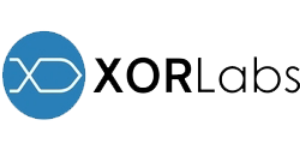You probably would not agree with me if I ask you to not spend a single penny of your Facebook Ad budget on conversion or lead gen ads.
Like for this client, we are not.
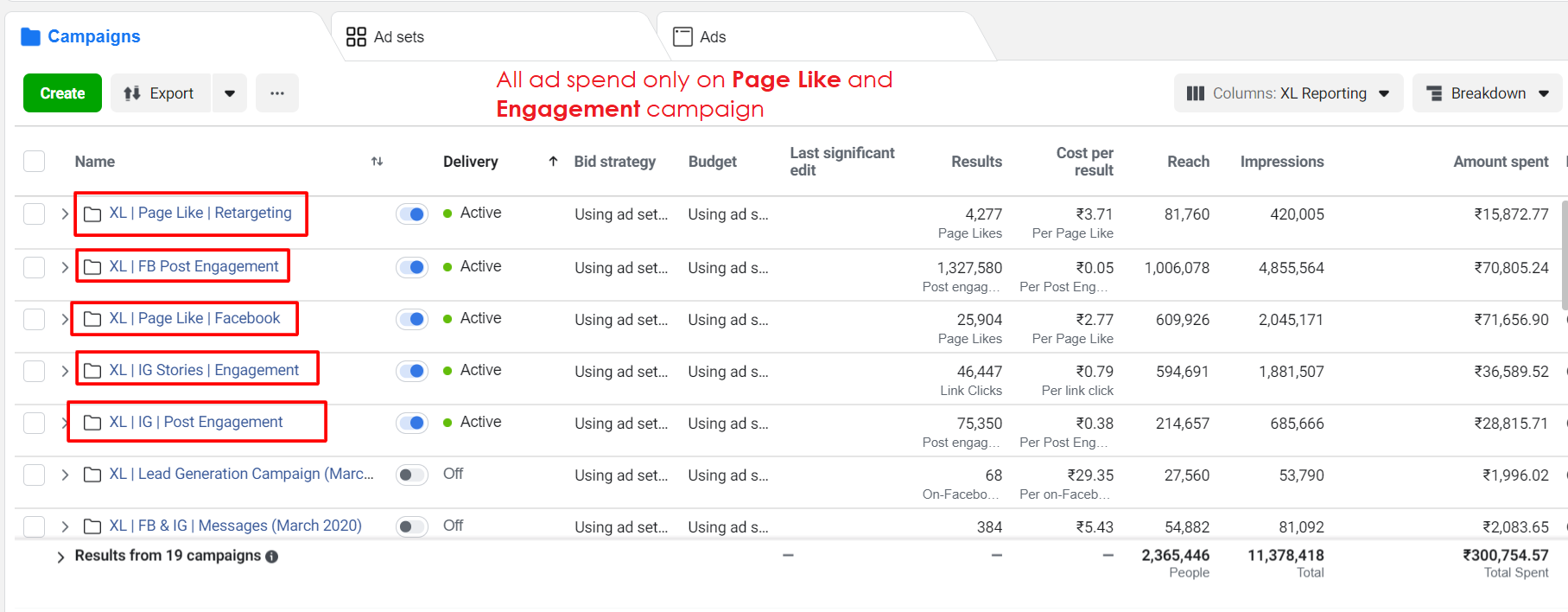
It’s tempting to always think with a lead gen mindset.
And despite that, we have helped this particular startup grow from $5,500 MRR (?4 lacs per month) to almost $37,000 MRR (?27 lacs per month) in just 7 months.
And it’s growing month-over-month.
For this particular client, and for the businesses for which this Facebook Ads funnel work which I am going to reveal to you shortly. We spend only on Page Like and Engagement campaigns. And sometimes only Page Like and Engagement campaign.
No more hassle of creating landing page.
No more focus on creating compelling ad copies.
Everything happens right there on Facebook.
The process is essentially inbound, driven by a funnel-based approach.
Instead of going to the customer and asking them to buy from you, you end up creating a machine that pulls customer towards you.
All you need to make that happen is:
- Facebook Ad budget
- A great Facebook page
- An awesome content strategy, and
- A great sales and service team
So, let’s dive right in and in the next 10 minutes you will learn through this Facebook ads case study how a simple Facebook ads funnel helped them scale revenue.
Step 1: Fix your monthly/quarterly/half-yearly Facebook Ads budget
Why do I ask you to think like this?
Here’s your first lesson: For any funnel to work, a user has to move through several steps. And moving from one step to the next takes time.
For this funnel to work and start showing you results, it takes 4-weeks.
To ensure that results are compounded week-over-week and month-over-month, you need to commit your ad budget, however small or however big, for a certain period of time.
Honestly, I wanted to title this blog post: Learn how this Facebook Ads Funnel that works under $1,000.
Because we started with a monthly budget of ?30,000 and now, we are spending over ?3,00,000 per month, increasing it every quarter based on learnings.
The point is: you need to commit.
Once you are confident what you can allocate to your ad spend, you start working on how to spend it.
Step 2: Follow this Facebook Ads funnel
Look at the funnel we followed for this particular client.
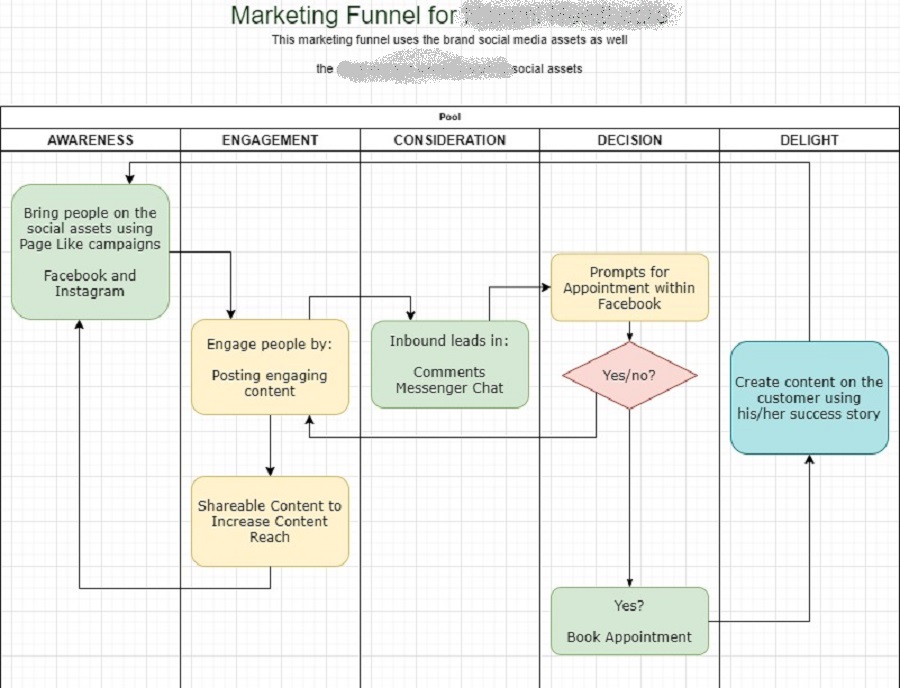
Like any funnel, it has conventional steps starting from awareness to conversion which is further propelled by customer delight.
Here’s how this funnel works.
Phase 1: Awareness Stage–Start with Page Like campaigns
So instead of a typical eCommerce campaign where you aim for sales from the first day, this funnel requires you to start with Page Like campaign.
For Instagram, you can run post engagement as well as story engagement campaign. You can use them strategically to acquire new Instagram followers too. And this can also be used in the phase 2.
The idea is to build followers with a clear value proposition.
“Follow this page for more health tips”
“Follow this page for more marketing ideas“
“Follow us be the first one to hear about our new product launch“
Your audience should know when they hit the Like button what they can expect from the page.
This is important.
The success of the funnel depends on whether you are able to bring your target audience to your page or not.
Here’s how the followers grew for my client since we started working with them.
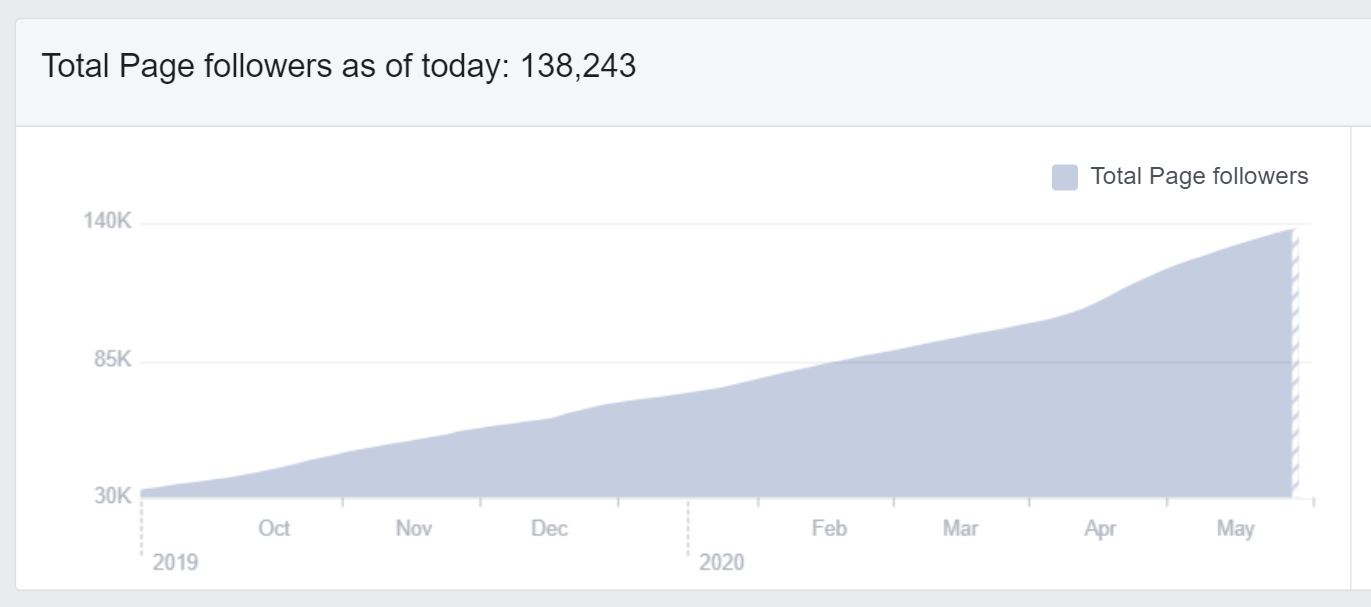
Phase 2: Engagement–Engage your new followers with killer content
You are building new followers. But is it time to sell? No.
This is where we enter the second stage: you start engaging all the new people who are coming onto your page. Start getting them to like, comment, and share on your post.
To do that, you need to start experimenting with content.
For this particular client, which is in online fitness and wellness niche, we used following content types:
- Nutritional information of the packed foods
- Nutritional info comparison of two different food items
- Case study with before and after images
For your business, it can be anything.
You can judge the success of your content with engagement rate which is a measure of how engaging is a content.
Engagement Rate of a Facebook post is calculated as the sum of total engagement (likes, comments, shares, and clicks) divided by the total reach of that post.
Here’s the engagement rate of some recent posts for this particular client.
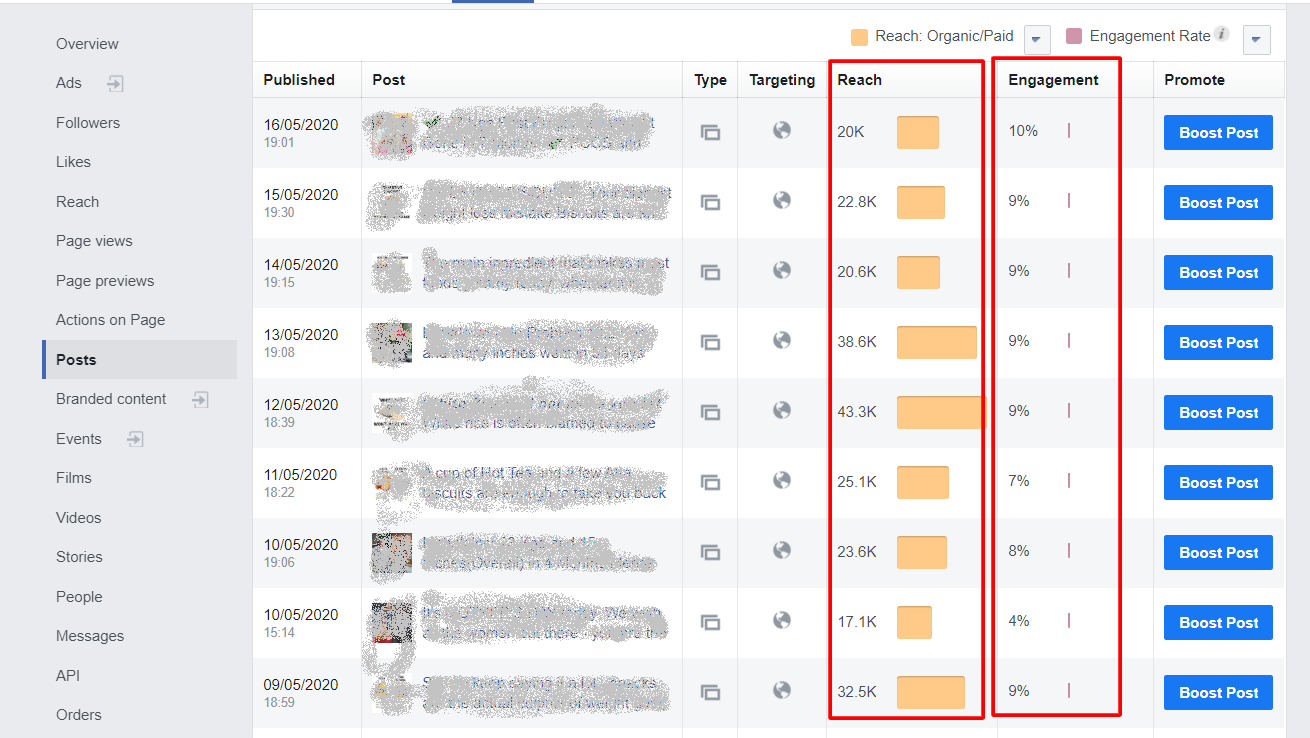
Guess what? In this screenshot above, it’s all organic. For the new page followers, you don’t need to spend on post engagement ads every time.
While we spend on post engagement ads here, it’s not always necessary.
Phase 3: Consideration–Track leads
This is where magic begins to happen.

People start commenting on your Facebook posts to know more about their service. In fact, they even share their problem or expectation from their service.
If you think this was all, here’s more for you.
People even start contacting you in Facebook Messenger. And Instagram comments and Instagram Direct.
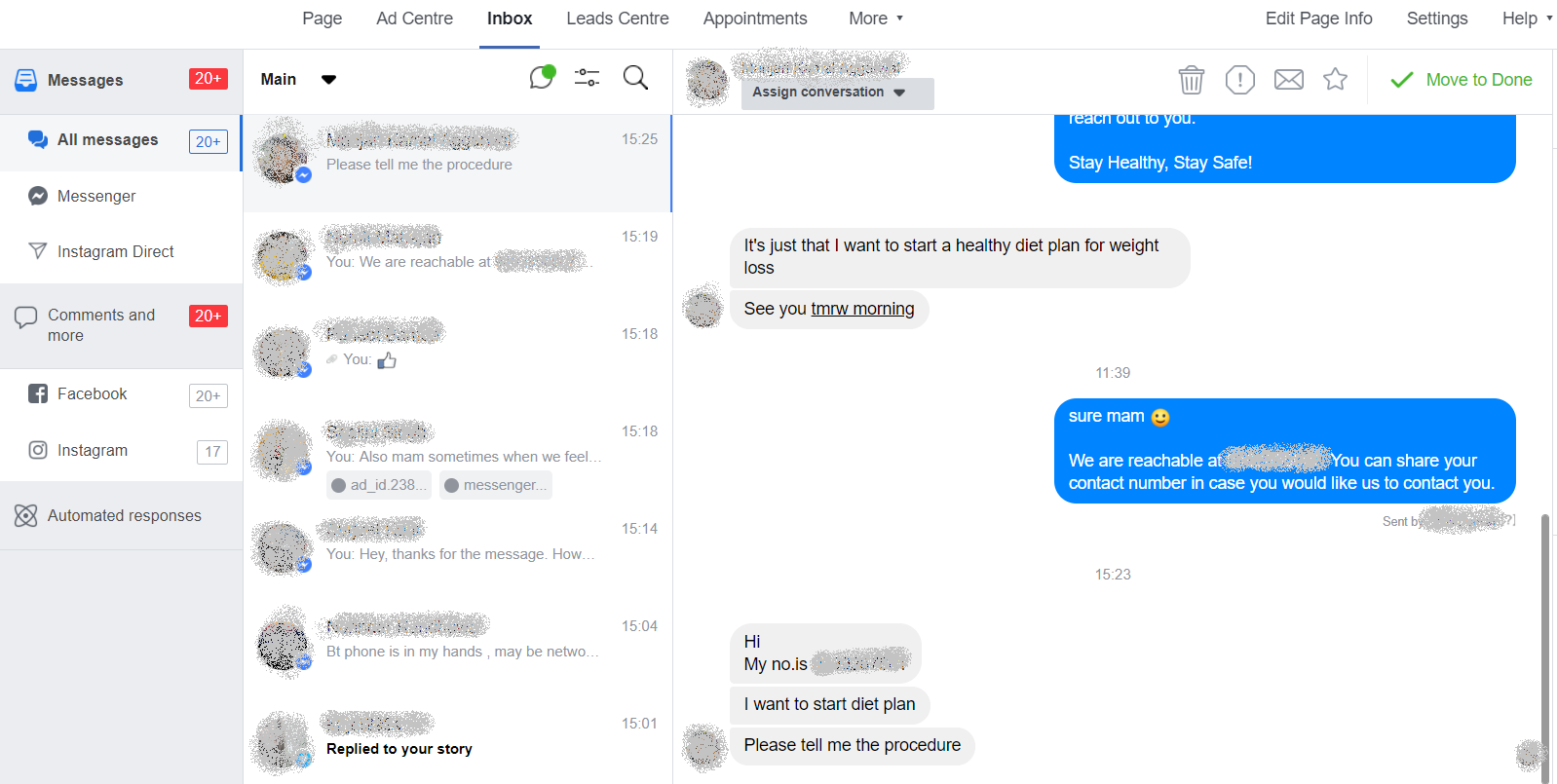
Basically, leads start flowing in from all the directions.
Did you sell? No.
Did you try to pitch your product yet? Not at all.
It all happens after the sales team scraps all the comments and message info and then contact these people. Right when they are expecting and ready for it.
So, what’s is happening here?
What you did was:
- Brought all these people on your page
- Engaged them without telling them about your service, and
- Allowed them contact you from every touch point on the platform
From here on it comes down to your sales and support team.
Phase 4: Decisions–Get appointments booked
Once someone has contacted you, whether in a comment on a Facebook or an Instagram post, Messenger chat, or Instagram Direct, he’s expecting a timely response.
Your team must be prepared and monitor all channels for response.
I am saying this because this same exact funnel is NOT working at the same pace with another education client.
Although tracking all these comments can be executed manually, it’s best you deploy a Facebook listening and monitoring tools to manage customer responses and reach outs.
If you don’t want to use any tool, even that’s fine. All you need to do is be responsive and ensure that your sales and support team is replying to prospects.
We’ve seen lead-to-conversion ratio of up to 30% in this funnel-based approach. And this is way better compared to the leads that comes from a landing page or Facebook lead forms.
And don’t worry if people don’t convert for whatever reason.
They are your follower now and you just need to keep nurturing them using retargeting ads.
Phase 5: Customer Delight–Generate referrals and word of mouth
You’d be surprised to know that almost 20% of revenue in this user-focused marketing comes from word of mouth.
How do we do it?
Well, you need to share your success stories. And even create a sense of joy and fulfillment in your customers.
For instance, we share the case studies of our customers and they just love when we do that.
A public acknowledgement from a brand makes them feel accomplished.
The result?
The end up sharing it with their friends, family, and colleagues generating numerous referrals.
Here’s an example.

Who can use this funnel?
To tell you the truth, I wanted to discuss this earlier. I didn’t want to break the flow.
But now that you know how this Facebook Ads funnel work, let me tell you on which industries we have used this for and whether it makes sense for you.
Personally, we have applied this to test and succeeded with:
- Healthcare and Wellness
- Education
We’re now trying to implement this with other industries ranging from eCommerce and consumer products to finance and B2B SaaS.
Conclusion
Did I tell you that we did try spending a very small chunk on Lead Form campaign?
It failed. Miserably.
Despite a low cost per lead, the conversion rate was disappointingly poor.
What this funnel shows is that marketing funnels can be implemented without having to send a person away from the platform they are on.
While Facebook Lead Forms are a great way to generate leads, they are not suitable for all business types.
In fact, it might hurt your brand in the longer run. And waste time of your sales team.
